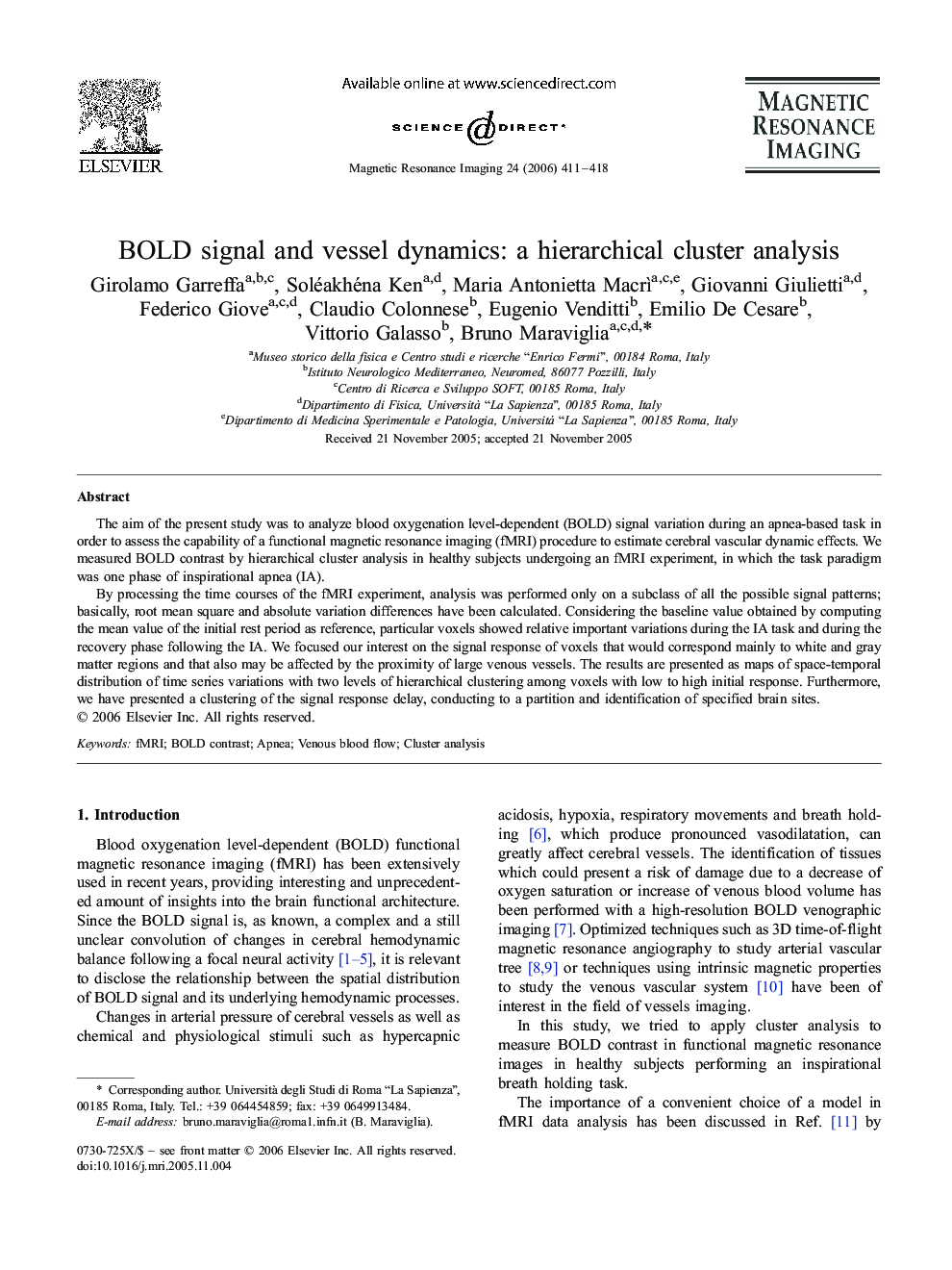| Article ID | Journal | Published Year | Pages | File Type |
|---|---|---|---|---|
| 1808097 | Magnetic Resonance Imaging | 2006 | 8 Pages |
Abstract
By processing the time courses of the fMRI experiment, analysis was performed only on a subclass of all the possible signal patterns; basically, root mean square and absolute variation differences have been calculated. Considering the baseline value obtained by computing the mean value of the initial rest period as reference, particular voxels showed relative important variations during the IA task and during the recovery phase following the IA. We focused our interest on the signal response of voxels that would correspond mainly to white and gray matter regions and that also may be affected by the proximity of large venous vessels. The results are presented as maps of space-temporal distribution of time series variations with two levels of hierarchical clustering among voxels with low to high initial response. Furthermore, we have presented a clustering of the signal response delay, conducting to a partition and identification of specified brain sites.
Related Topics
Physical Sciences and Engineering
Physics and Astronomy
Condensed Matter Physics
Authors
Girolamo Garreffa, Soléakhéna Ken, Maria Antonietta Macrì, Giovanni Giulietti, Federico Giove, Claudio Colonnese, Eugenio Venditti, Emilio De Cesare, Vittorio Galasso, Bruno Maraviglia,
